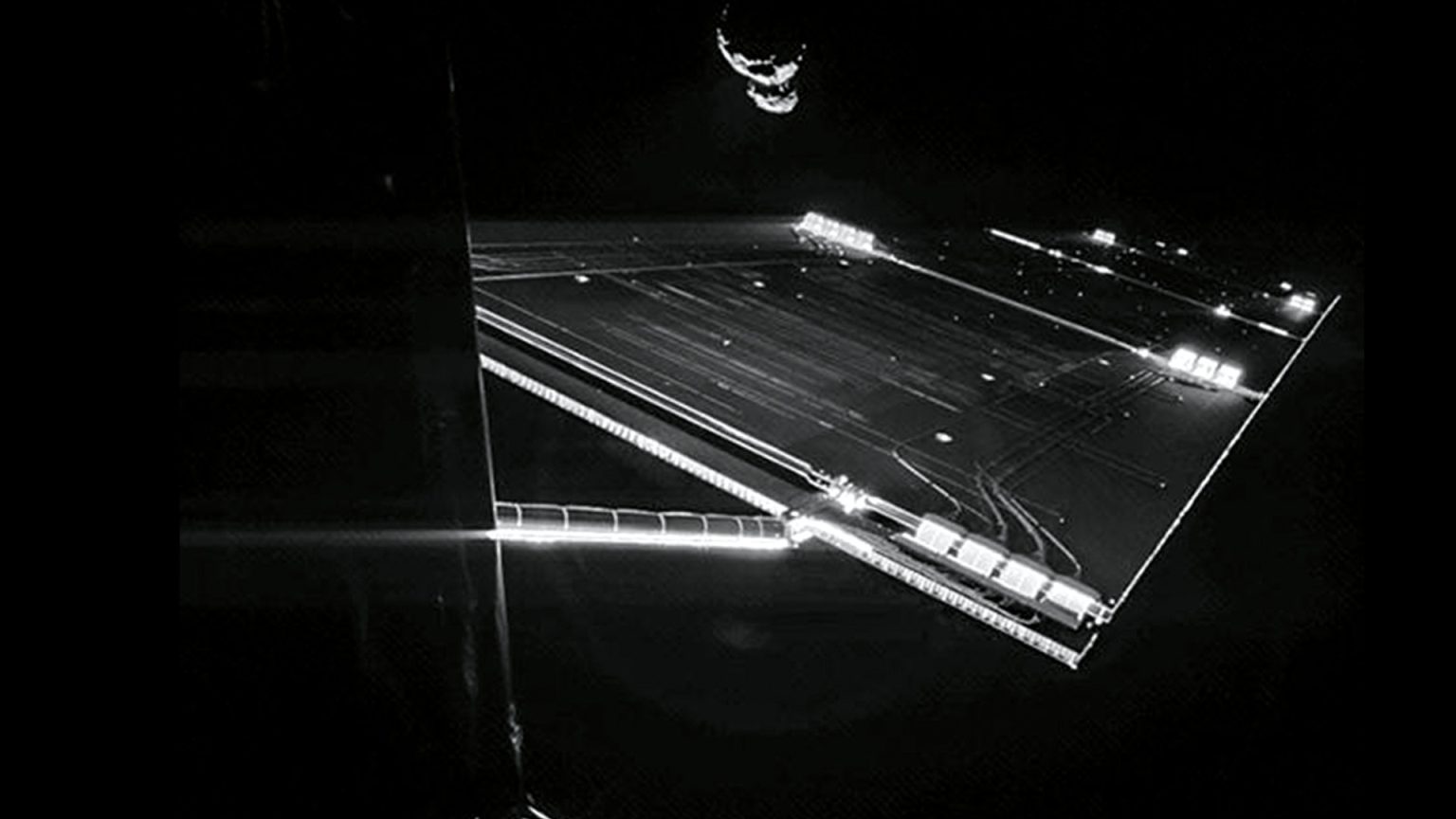Comets are time capsules that contain ancient material from the era when the Sun and its planets formed. But before scientists planned the Rosetta mission, only a handful of spacecraft had observed one up close for a short period of time, and none had taken space science to its limits by attempting to chase and even land on one.
20 years ago, on March 2, 2004, the European Space Agency’s Rosetta mission lifted off aboard an Ariane 5 from French Guiana to embark on a 7.9 billion kilometer journey to rendezvous with comet 67P Churyumov-Gerasimenko and send its tiny Philae lander to its surface.
During its 10-year voyage, Rosetta performed a series of orbital maneuvers using Earth’s and Mars’ gravity to slingshot and accelerate up to the 55,000 km/h (over 15 km per second!) that it needed to reach 67P. Travelling at that speed and attempting to rendezvous with a 4 km wide comet was described as a fly trying to land on a bullet at full speed. In fact, Rosetta reached 123,000 km/h while chasing the comet at the point nearest to the Sun.
In July of 2011, Rosetta entered hibernation for its cold, lonely trip to 67P. It stayed alive through a heating equivalent to six light bulbs to prevent its fuel from freezing. Fortunately, in January of 2014 the spacecraft was awakened by four pre-programmed internal clocks and started its difficult final approach to 67P. On August 6, 2014, its thrusters established the spacecraft in an orbit a mere 100 km above the comet and matched its speed across space.
Then, Rosetta started working, measuring all the comet’s parameters and scanning and mapping the surface of this unknown body to find a landing spot on it.
Everyone remembers the tiny Philae lander bouncing on the comet’s surface, but this was just one of many accomplishments and discoveries of Rosetta. Equipped with 11 instruments, Rosetta successfully obtained amazing measurements of the comet when it was inactive and later studied it when it approached the Sun and became active. And, more importantly, it also studied what happened when it drifted away from our star and settled down once again.
During its journey, Rosetta had to survive the blistering heat of the Sun from a distance equal to that of Venus, as well as temperatures of minus 270 °C in deep space near the orbit of Jupiter—all of this while making sure that its fuel would not freeze.
The Philae lander touched down on a comet for the first time ever and successfully performed most of its mission, sending scientific data to Rosetta for subsequent transmission to Earth. Unfortunately, its final resting place was too dark to keep its batteries charged, so it entered hibernation after 55 hours.
Incredibly, over six months after staying silent in its dark landing site, Philae came back to life in June 14, 2015 and pinged Rosetta. And it started sending more unique, invaluable data. It was in early September of 2016, nearing the end of the historic mission, that the first image revealed where Philae had ended up—stuck in a dark crevasse baptized as ‘Abydos’.
Finally, on September 30, Rosetta received the order to make a controlled descent toward the comet’s surface, but unlike other exploration missions that end in high-speed impacts, Rosetta landed at a smooth speed of 2 km/h.





